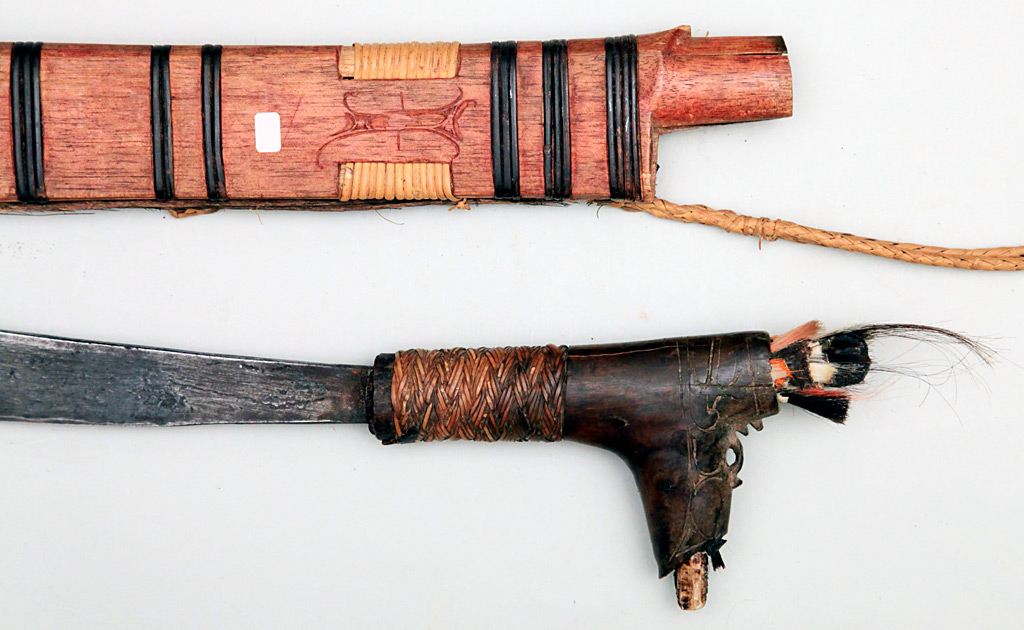
This is a relatively recent example of a mandau clearly from these later times when such blades were were and are employed as general purpose machetes rather than for the collection of hominid heads. Sufficient traditional details are correct to suggest this mandau may have been intended more as a utilitarian tool along traditional lines than as a quick knock-off to suit the tastes of the traveler. The 20.5 inch (52 cm) long curved single edged blade is quite heavy (almost a third of an inch (0.8 cm) thick at the ricasso) and retains the traditional geometry of a convex faceted face opposite a concave face. The finish is fairly rough ground and filed and dark grey except on high points and where a keen edge has been sharpened. A number of forging flaws (cold shuts) may be seen. The hilt is of dark dense wood with simple inscribed decoration and some remaining colored hair, but this has been largely lost especially from the hilt branch where only stubble and a wooden peg remain. The front of the grip is wrapped with rattan while resin (damar) around the base is largely lost. A scabbard composed of two thin boards strapped together with rattan has cracks and losses at the tip and a crack from the mouth. Half of the plant fiber scabbard (apis) for the typically missing accessory knife remains. The overall length in the scabbard is 27½ inches (70 cm) with a weight of 29¼ ounces (831 grams).



